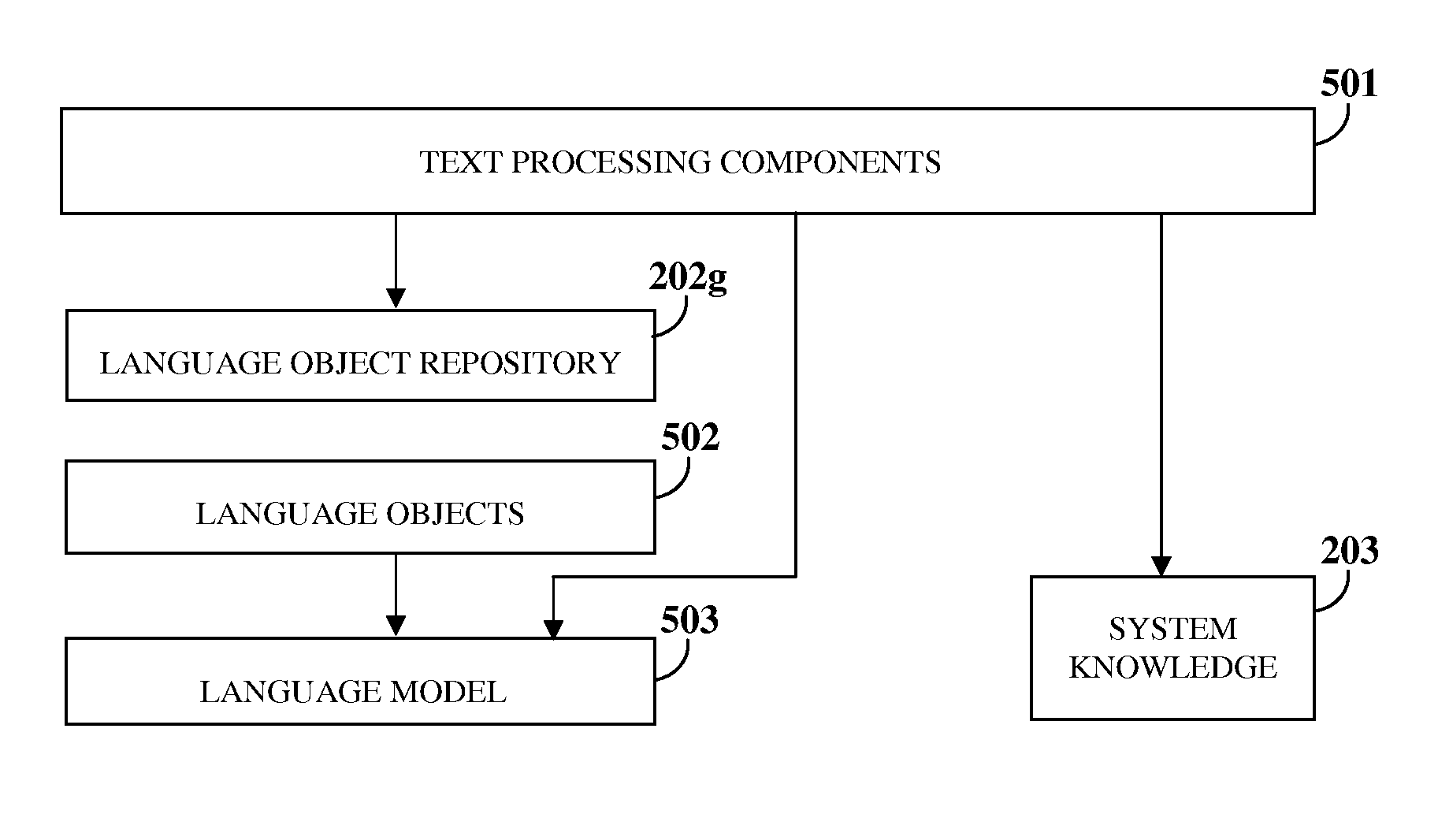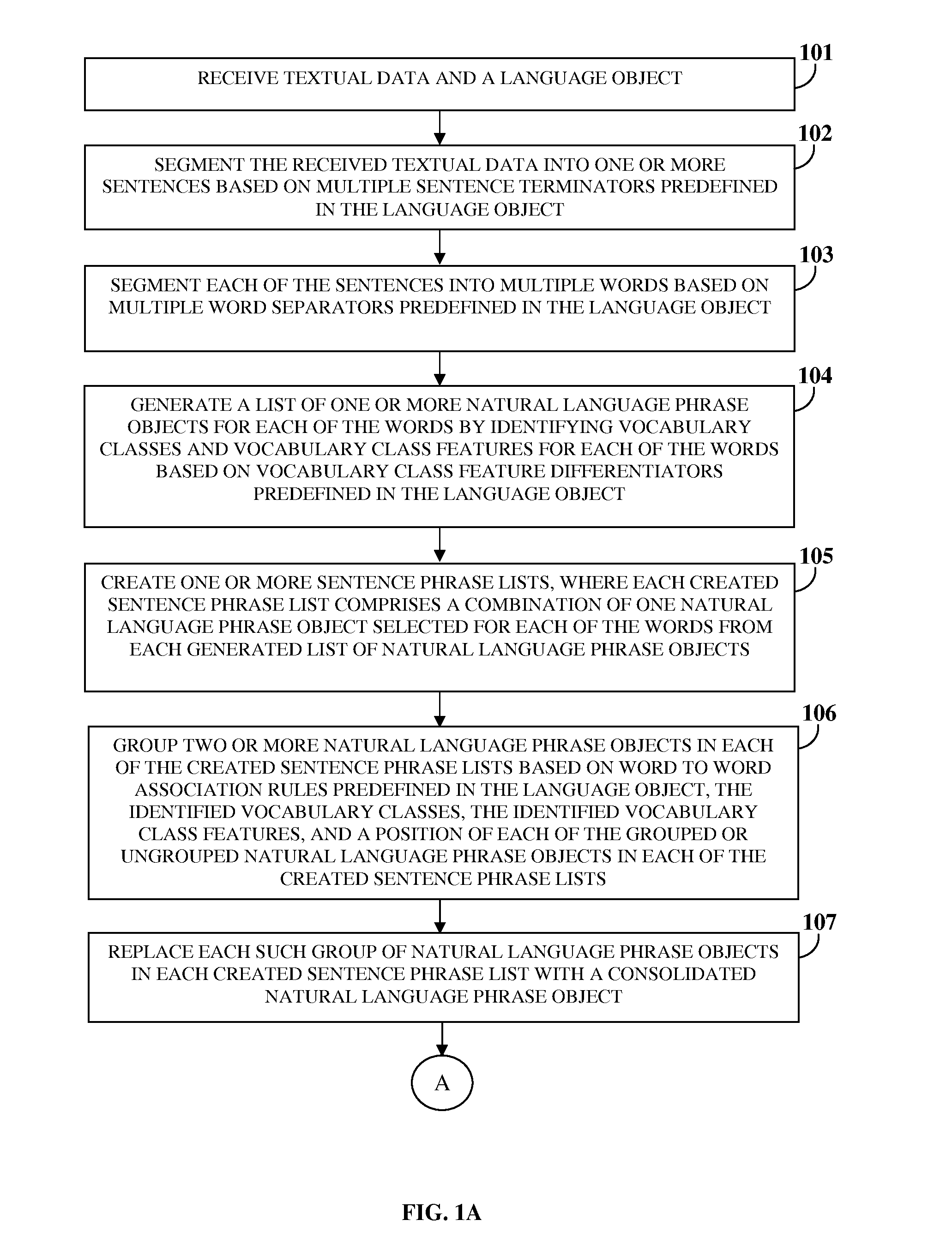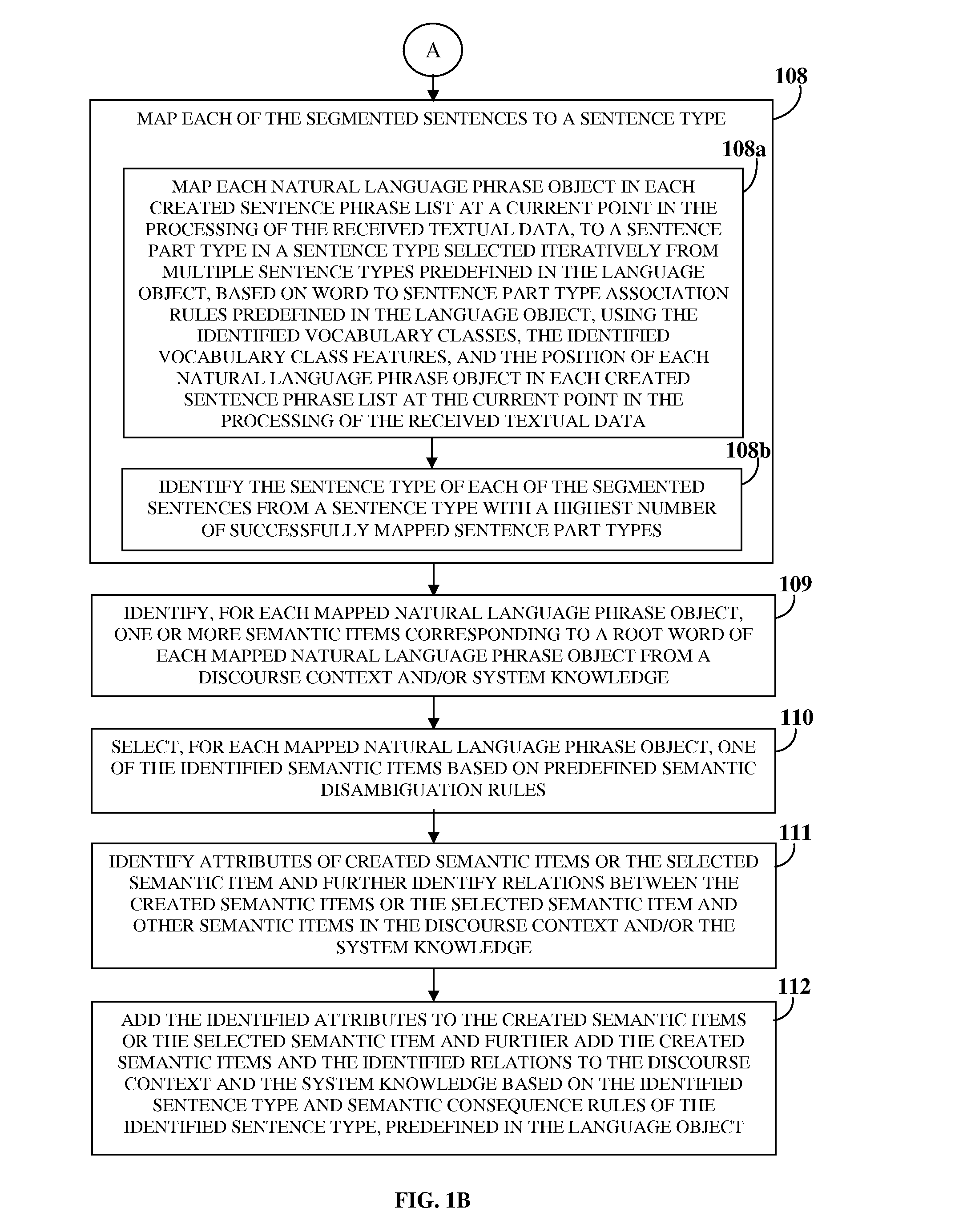Language Processing And Knowledge Building System
a language processing and knowledge building technology, applied in the field of language processing and knowledge building system, can solve the problems of limited success achieved in the processing of natural language utterances by computer programs, inability to document and maintain the behavioural history of objects at the level of the language, and inability to adequately capture semantic compounding and combinatorial explosion in grammar representations
- Summary
- Abstract
- Description
- Claims
- Application Information
AI Technical Summary
Benefits of technology
Problems solved by technology
Method used
Image
Examples
Embodiment Construction
[0031]FIGS. 1A-1B exemplarily illustrate a method for processing textual data. As used herein, “textual data” refers to text comprising multiple sentences or utterances in any one of multiple languages comprising, for example, natural languages, domain specific adaptations of natural languages, programming languages, etc. The terms “sentence” and “utterance” are hereafter used equivalently and interchangeably. A sentence is relevant in a visual context and an utterance is relevant in an auditory context. As used herein, “natural language” refers to a language that human beings develop in an unpremeditated manner over a period of time. Natural languages comprise, for example, English, Indian languages such as Hindi, Kannada, Sanskrit, etc. The method disclosed herein employs a language processing and knowledge building system (LPKBS) comprising at least one processor configured to execute computer program instructions for processing textual data. The method disclosed herein integrate...
PUM
 Login to View More
Login to View More Abstract
Description
Claims
Application Information
 Login to View More
Login to View More - R&D
- Intellectual Property
- Life Sciences
- Materials
- Tech Scout
- Unparalleled Data Quality
- Higher Quality Content
- 60% Fewer Hallucinations
Browse by: Latest US Patents, China's latest patents, Technical Efficacy Thesaurus, Application Domain, Technology Topic, Popular Technical Reports.
© 2025 PatSnap. All rights reserved.Legal|Privacy policy|Modern Slavery Act Transparency Statement|Sitemap|About US| Contact US: help@patsnap.com



